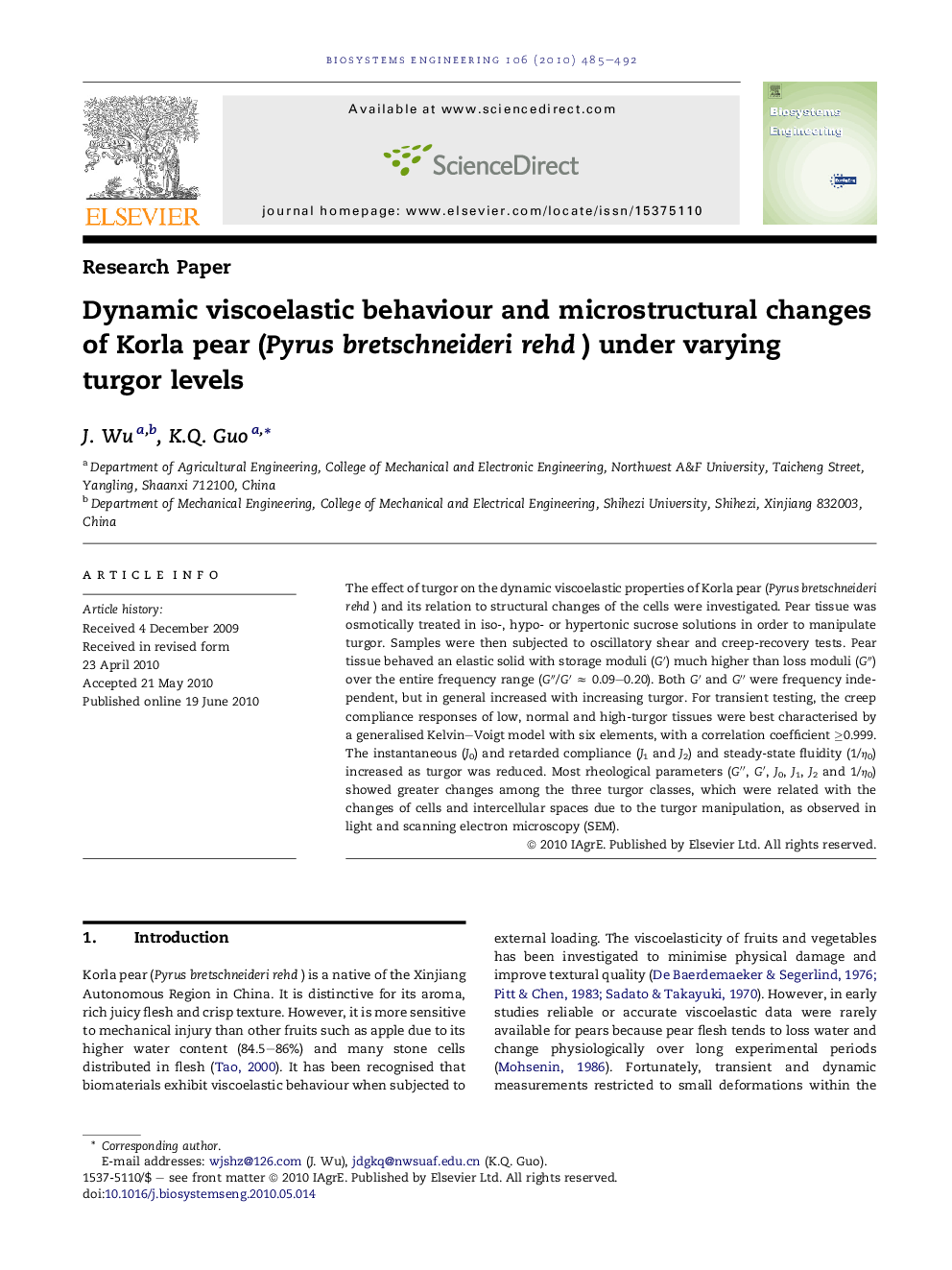| Article ID | Journal | Published Year | Pages | File Type |
|---|---|---|---|---|
| 1711768 | Biosystems Engineering | 2010 | 8 Pages |
The effect of turgor on the dynamic viscoelastic properties of Korla pear (Pyrus bretschneideri rehd) and its relation to structural changes of the cells were investigated. Pear tissue was osmotically treated in iso-, hypo- or hypertonic sucrose solutions in order to manipulate turgor. Samples were then subjected to oscillatory shear and creep-recovery tests. Pear tissue behaved an elastic solid with storage moduli (G′) much higher than loss moduli (G″) over the entire frequency range (G″/G′ ≈ 0.09–0.20). Both G′ and G″ were frequency independent, but in general increased with increasing turgor. For transient testing, the creep compliance responses of low, normal and high-turgor tissues were best characterised by a generalised Kelvin–Voigt model with six elements, with a correlation coefficient ≥0.999. The instantaneous (J0) and retarded compliance (J1 and J2) and steady-state fluidity (1/η0) increased as turgor was reduced. Most rheological parameters (G″, G′, J0, J1, J2 and 1/η0) showed greater changes among the three turgor classes, which were related with the changes of cells and intercellular spaces due to the turgor manipulation, as observed in light and scanning electron microscopy (SEM).
